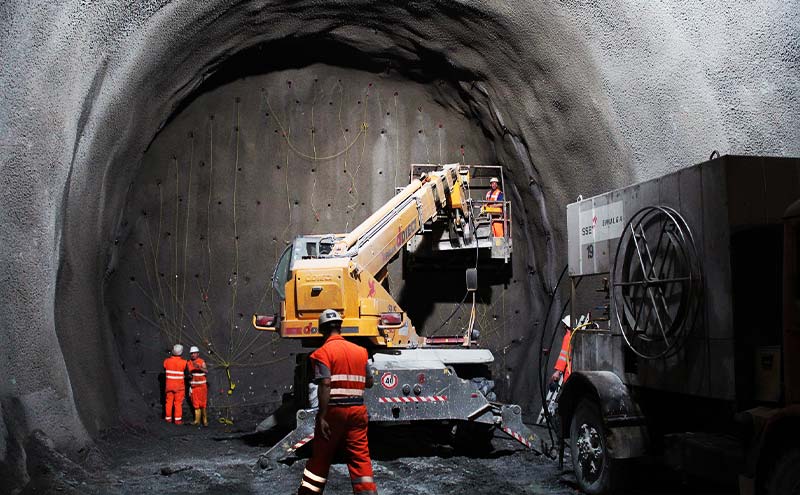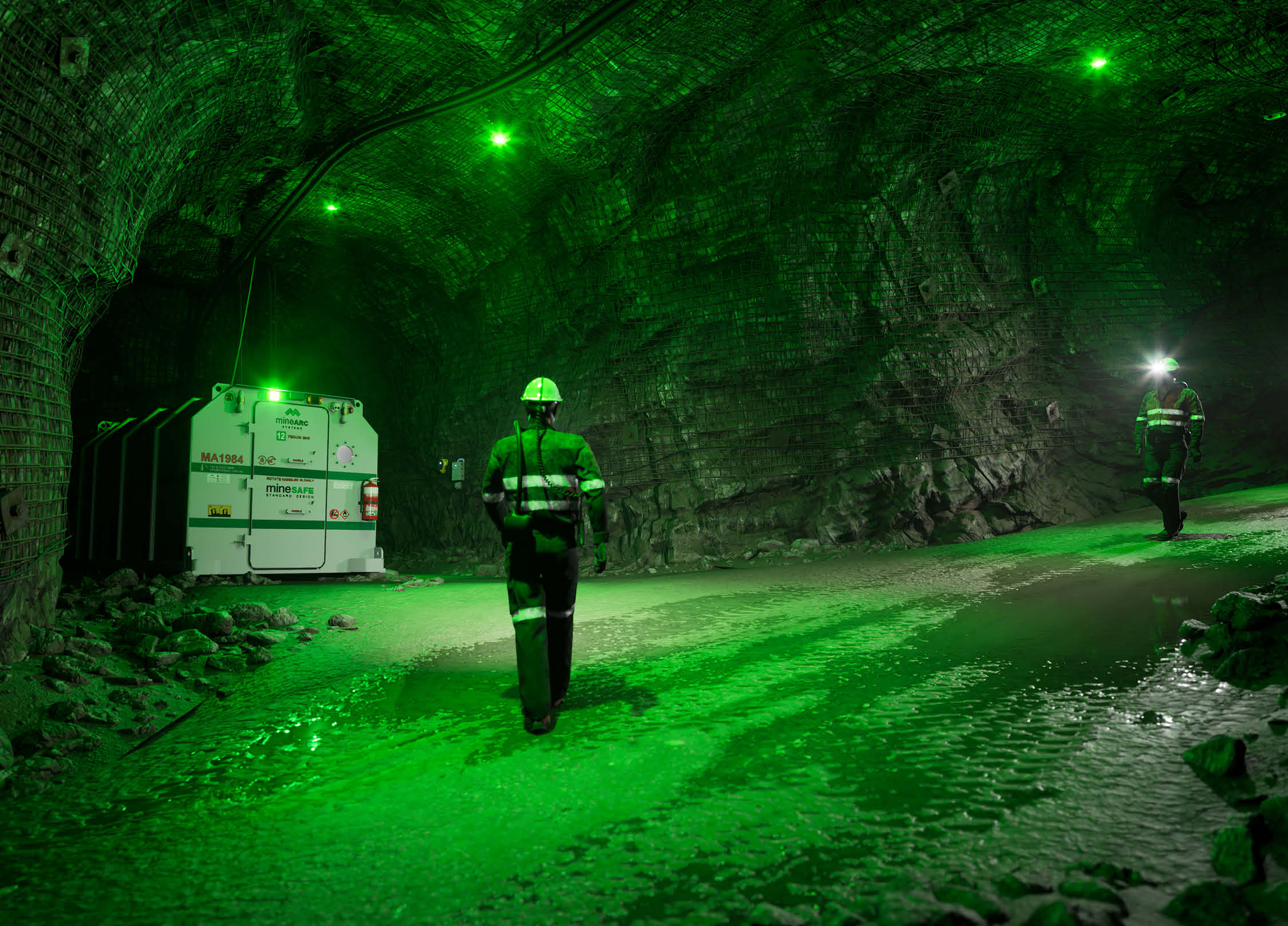Tunnels under construction are exposed to potentially explosive conditions while penetrating areas where oil, gas or coal may release combustible gases, particularly methane (CH4). Therefore, detecting methane and initiating emergency actions is a primary function of the Methane Shut Off System (MSOS).
MineARC Systems specifically engineered a Methane Shut Off system for tunnelling. The device is currently installed on two MineARC TunnelSAFE Refuge Chambers, mounted on the rear of two separate Tunnel Boring Machines (TBM’s) at an Egyptian tunnel construction site in Port Said.
Methane in Tunnels Under Construction
Methane is the main constituent of natural gas. Whilst being non-toxic when inhaled, the odourless and highly flammable gas is asphyxiant and may displace oxygen in an enclosed space resulting in suffocation. Even low emissions of CH4 can be hazardous. When mixed with air, Methane is explosive in concentrations of between 5 and 15%. 5% concentration is the lower explosive limit (LEL) or methane, while 15% value is the upper explosive limit (UEL). Methane concentrations in air that are below the LEL or above the UEL are not explosive.
When a methane pocket is exposed, the gas is emitted from the strata, usually at a high concentration. The most likely place to find emitted CH4 is in the tunnel’s face area, where it will collect in unventilated corners. In operations using a TBM, Methane can accumulate at the muck discharge and behind the face shield. If the tunnel is unlined, any location along the entire length is a potential site for a Methane layer at the crown. Enough ventilated air must be provided to immediately dilute the methane gas to safe levels as soon as the gas enters the tunnel. A good ventilation system will supply enough fresh air to reduce gas levels far below the LEL as soon as the gas is emitted from the strata.
Detecting Methane in Tunnel Projects
Methane gas monitors feature a non-dispersive infrared (NDIR) sensor. Measurement is based on the physical property that CH4 molecules absorb infrared light or particular wavelengths. By shining light through the target gas and using suitable optical filters, the light detector will give an output that can be converted into a CH4 concentration value.
The Aura-FX Methane Monitor measures CH4 levels, ensuring it remains within a safe range. The sensor emits an initial warning signal at 1.1%, with an alarm sounding when levels reach 2.2%.
What is a Methane Shut Off System?
In the event of a methane gas leak, a refuge chamber is no longer safe for operation due to its electrical componentry being at risk of causing an explosion.
The Methane Shut Off Systems for tunnelling is a manually activated electromechanical system that will isolate all electrical components and will prevent the UPS back up from restarting them. The MSOS unit will fundamentally shut down the refuge chamber and automatically seal the battery box.
The MSOS is activated by pressing one of the shut-off switches located adjacent to the chamber door (externally) and adjacent to the ELV Scrubber (internally) before evacuation. Persons are notified of the chambers state visually with intrinsically safe amber flashing lights and audibly via a siren. Once activated, the refuge chamber is rendered uninhabitable and is not to be occupied.
Once MSOS is activated, compressed air flows from the cylinders inside the chamber through an actuating cylinder, utilising a closed-loop compressed air system. This cylinder is mounted on the battery box cover plate’s interior face. It closes a knife gate valve that seals the battery box.
Compressed air clears the battery box of potentially explosive gases such as methane from the local atmosphere and hydrogen from charging batteries. A separate air line, supplied from the same cylinders, purges air through a rear bulkhead gland. This air line pressurises the battery box to a level higher than its surroundings, reducing contamination ingress risk.
Once traces of methane have cleared, and re-entry into the tunnel is safe, the refuge chambers can be returned to service by resetting both emergency MSOS buttons.
Access More Resources
Ryan Woods, MineARC Service Technician, recently commissioned the Egyptian TunnelSAFE Refuge Chambers. During commissioning, Mr Woods also conducted refuge chamber operator training for 80 people.








